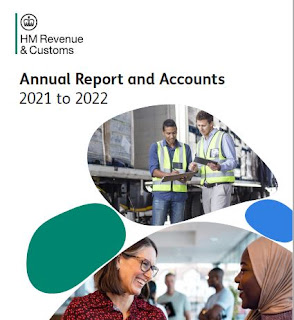HMRC's School Report - See me at the end of the lesson
HMRC released its Annual Report for 2022 last month.
Some embittered highlights: “Our locations strategy, announced in 2015, remains key to enabling delivery of all our departmental objectives. Of around 170 ageing HMRC offices…154 have now closed to employees, including 20 during 2021 to 2022.”
For those employees who didn’t want to move to one of the new city centre offices (often outside of reasonable daily travel) the cost of exit packages was £82,265,000 in 2020-21 and £14,306,000 in 2021-22. In a separate item, the cost of “Contingent labour” (temporary staff) rose from £82 million in 2020-21 to £170 million in 2021-22. A bargain.
“Terms and Conditions have been restructured and modernised to make it easier to deploy colleagues to where they’re most needed to meet customer demand…providing greater fairness and increasing workforce productivity.” That was what staff agreed to (via the union) in order to get their long-delayed pay rises.
The sickness absence levels are interesting. In 2019 -20, all sick absence was non-Covid. The measure was 7.48 average working days lost.
In 2020-21 the first record of Covid absences began with 0.87 average days lost to Covid. Non-pandemic absence was down to 4.91 AWD, so the total was down to 5.78! It could just be that with most staff working from home, they were more inclined to soldier on over their laptop when they didn’t feel well. Equally, it’s possible that with less mixing and commuting, staff weren’t picking up the same number of bugs they usually get.
But in 2021-2022 Pandemic Related Absence rose to 1.61 and Non-Covid absence was 6.65, giving a total of 8.26 average working days lost. Not surprisingly the report decides to accentuate the positive (“once adjusted for pandemic related absences the total remains below pre-pandemic levels at 6.65”!)
Equality, Diversity and Inclusion. "As of March 2022 17.1% of our colleagues have an ethnic minority background, up from 13.8% in March 2020 (surpassing the target of 15% by March 2024)."
Hmm, a difficult one here. I agree that it's important that HMRC should be inclusive. But could this statistical change be due to closing offices in deprived, isolated areas? Did moving the jobs to cities and taking on new staff change the ethnic mix? I ask because I remember senior managers questioning why we had such an embarrassingly low ethnic minority representation in our office (the answer, as born out by local authority stats, was that the office was located in a region that had a very low ethnic mix). Only a statistician can really answer that question, but if it’s true, it’s another win-win for Building our Future. And I agree it's important that the diversity of the Civil Service should be increased, it's another reminder that, by taking the high value jobs out of the area you are still removing future job prospects for the population in that area – so much for levelling up






